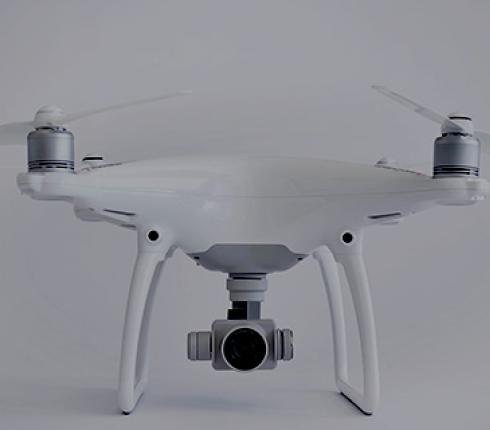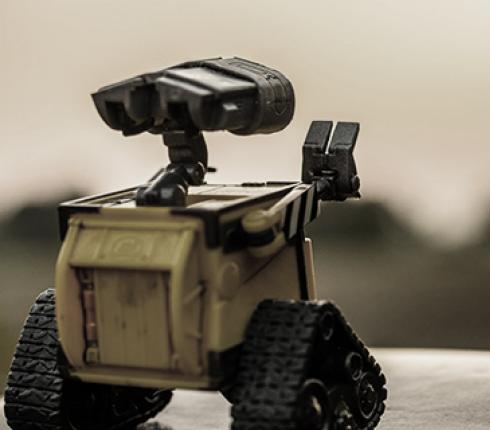Using drones offshore
Drone technology is rapidly developing and can increase both efficiency and improve safety. Recently regulation on use of drones has been enacted, and this is relevant to offshore flights. Therefore, the legal framework in Denmark is relatively advanced - and new rules are already in the pipeline.
Drone technology has been known for many years, where drones especially have been used for military purposes. Only recently opportunities for commercial exploitation have started to emerge. The potential for use in the offshore industry is large, both within the oil and gas industry as well as in offshore wind and wave energy.
To some extent, drones are already used for inspections of offshore oil and gas installations, and Lufthansa has signed a contract on the use of drones for inspection of onshore wind turbine farms.
One of the advantages of using drones on offshore oil and gas installations is that drones can easily access otherwise inaccessible areas. Furthermore, when using drones staff security is not an issue, which reduces the risk of downtime during inspections.
Drones are already performing simple inspections. Utilizing drones saves time and increases safety.
Additionally, drones can be used for transportation of spare parts that previously may have been sent by either a service vessel or a helicopter.
Technically, there is nothing preventing a drone from departing from the coast and going out to an offshore wind turbine farm. However, this will require a relatively advanced drone. Currently, it is likely easier to transport drones on a service vessel.
What are the legal conditions for operating a drone?
EU has not set forth any detailed rules for the operation of drones, and the Chicago Convention on international Civil Aviation only specifies that flying drones over a foreign State require special authorization. Currently a separate permission for drone operations are required in each country.
Which leads us to one of the classic issues with the offshore sector – that it operates in areas with several different jurisdictions, which the map below illustrates.
As illustrated, drones may need to cross jurisdictions in several cases, which means that the drones must be approved in more countries than just the drone’s “home country”.
In Denmark, the government has a generally positive view on the use of drone technology. Thus, a drone strategy has been adopted to facilitate industry growth. The current rules on flying drones may seem relatively burdensome, but when compared to the other rules in the aviation sector in general, they are not.
The considerations behind the rules are concerns relating to security and privacy. If these concerns are considered when using drones, you are already on the right track.
Flights within and outside urban areas
According to the Danish Air Navigation Act, two main conditions must be met for drone flight. First, the drone operator must have acquired a drone license. Second, the drone must be insured. For drone flights within urban areas it is also a condition that the drone must be registered and identifiable. Although one may think that rules on flying drones within urban areas are not relevant to offshore use of drones, they are, as industrial and port areas are considered urban areas. Thus, a drone flying from a port and possibly to an offshore platform is covered by the rules.
In addition to the above requirements, the police shall be contacted 24 hours prior to each flight when flying drones in urban areas.
Before commencing flight, it may be advisable to apply for exemptions from the requirements.
If a flight starts outside the urban area, for instance from a ship, other rules apply. Not considering possible application of the rules of the flag state, the rules on flights outside urban areas will generally apply.
As per the current rules, it is not possible to fly large drones (7-25 kg.) in such a scenario, whilst regulation on flights with smaller drones is only limited.
However, looking at the current rules is not very interesting, as new rules are expected mid-2017. But what can be expected from these?
New rules are coming
It is expected that the new regulatory framework for aviation outside urban areas will be a light version of those applied within urban areas, as the risk of damages and violations of privacy is significantly smaller.
However, it remains likely that the flight out of line of sight will require special permission and possibly some experience. Conversely, there is hardly reason for maintaining the requirement for notification of the police.
When determining the maximum altitude, the drones can fly, it cannot be expected that this shall be raised significantly above the current 100m. This may cause problems to inspections of offshore wind turbines, as these are often significantly taller.
Likewise, it is expected that drones still must yield unconditionally, as manned aircrafts will maintain their right of way. This makes sense in relation to commercial flights, but an argument can be made in relation to leisure flights, where unplanned presence of a single aircraft can cause cancellation of several planned drone flights. It would be appropriate to consider drone flight as part of air traffic aligned with manned aircraft.
There may be political will to establish specific rules on offshore operation of drones that will take the special conditions out at sea into account.
Lloyd's Register has already issued guidelines for offshore use of drones.
In view of Lloyd's position on the international market and the potential impact on insurance of drones these guidelines and their development is worth paying attention to.
NJORD Law Firm works with the industry to ensure that appropriate rules are established. In addition, we assist individual companies with specific applications for exemptions and permits in Denmark and the countries surrounding Denmark.






